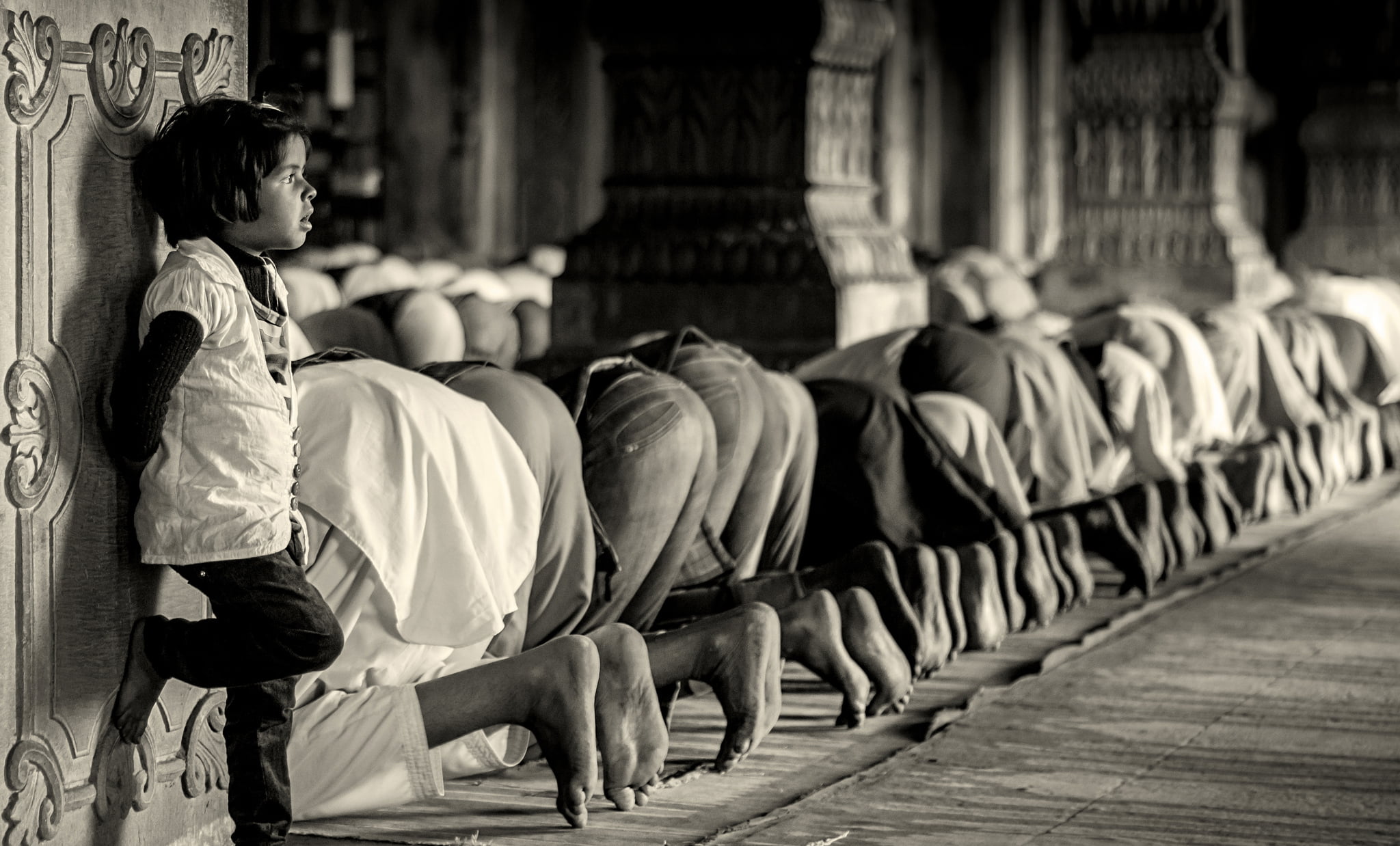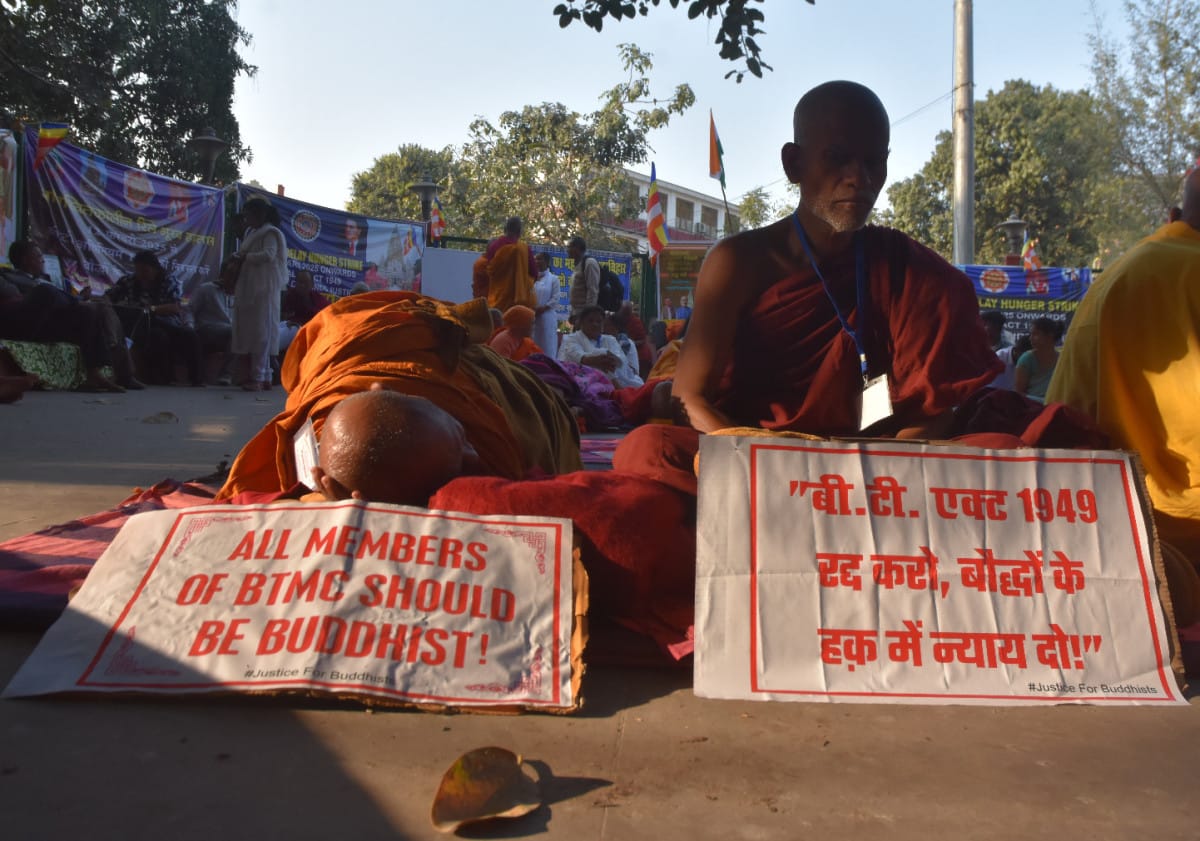Since the advent of the 20th century, Hindu-Brahmanical patriarchy and the threat it has located in Islam has led to a display of masculine assertion through the bodies of both Hindu and Muslim women. The classification of Muslim men as lustful and predatory, as opposed to their heroic and brave Hindu counterparts, has multitudes of underlying reasons—the most important of which is rooted in a need to control the reproductive resources of Hindu women.
Insecurely latching on to the belief that population rise of Muslims or Christians can potentially cause downward mobility of Hindus in Indian society has made Hindu women’s potential childbearing womb an exclusive property of a Hindu man, thus enslaving a women’s sexual agency to the religion she is born into. Themes of honor and chastity also play into these relations to complicate it further. While these ideas still echo loudly in present times, gender as a tool of communalism can be traced back to the rise of Hindu militant organisations like Arya Samaj and Hindu Mahasabha, alongside Hindi press over a hundred years ago.
Hindu Masculinity and Communalism In Colonial India
Twentieth century was certainly a watershed era for Indian history. While Gandhian mass movements like Non-Cooperation and Khilafat grasped the general public, the first half of this century also witnessed an intensification of communal sentiments, especially in North India. Shortly after a British reform of 1909 that created a separate Muslim electorate, a number of Hindu organisations came into existence, including the far-right Hindu Mahasabha. Throughout the decades of 1910 and 1920, communal tensions escalated.
Shortly after a British reform of 1909 that created a separate Muslim electorate, a number of Hindu organisations came into existence, including the far-right Hindu Mahasabha. Throughout the decades of 1910 and 1920, communal tensions escalated.
An example of this is Shuddhi Movement of 1923, started by Arya Samaj’s Swami Shraddhanand to recover ‘victims’, mainly women, who had converted to Islam or Christianity. Hindu Mahasabha was compelled to put aside its differences with the Arya Samaj to ensure the success of the movement and more than one hundred thousand conversions were witnessed. An anxiety riddled attempt at reclaiming their idea of Hindu masculinity, most of these organisations evoked hyper-masculine imageries of Shivaji and Maha Rana Pratap to invoke the golden era of Hinduism. Conversion from Hinduism, as well as a submission to colonial powers, represented a loss of Shivaji-esque masculinity and movements like Shuddhi reaffirmed a return to these notions. Any display of female disobedience was a threat to this.
Widow Remarriage Act of 1856 is an interesting case study in the assertion of control over a Hindu widow’s sexuality by revivalist groups like Arya Samaj. While undoubtedly an improvement from the state of permanent widowhood endowed on widows by Brahmanical patriarchy, the Act still propagated Brahmanical rights of inheritance which disadvantaged lower caste women. Hindu widows often eloped with Muslim men, and hence this Act was the most socially acceptable form of control over reproductive labor, inherited property, and sexuality of widows.
Also read: Why Muslim Women Wearing Hijab Might Be The Face Of Resistance
Muslim Heroine, Hindu Hero
On the contrary, a conversion of Muslim women to Hinduism was considered heroic. Any Hindu man who successfully wooed a Muslim woman was glorified as the possessor of ultimate masculine prowess. Emerging from widespread Maratha tradition, the love story between Shivaji and Aurengzeb’s daughter, Roshanara and the immense appeal it found among Hindu nationalist is an example of this. Popular novels of the 20th century depicted stories along the same themes; a Muslim Heroine falling hopelessly in love with a Hindu Hero.
There was a sense of content in subjugating women without coercion—on one hand, they believed they were releasing women from the oppression of Islam and equipping them with Hindu spirituality, and on the other, they were mocking Muslim men’s incapacity to keep their women’s agency in check.
Media Trials: Illegal Love
Radically departing from these interfaith love stories, in early 20th century, stories of ‘abduction’ of Hindu women by Muslim men were considerably sensationalised by the press, strengthening the image of a virile and predatory Muslim. Since this accumulated a larger audience and increased readership, the press continued to release these stories, often employing exaggerations to the degree of misinformation. Court proceedings of cases of interfaith affairs were also covered extensively and dramatised. Charu Gupta in her essay Impossible Love outlines several such instances in Uttar Pradesh.
Radically departing from these interfaith love stories, in early 20th century, stories of ‘abduction’ of Hindu women by Muslim men were considerably sensationalised by the press, strengthening the image of a virile and predatory Muslim. Since this accumulated a larger audience and increased readership, the press continued to release these stories, often employing exaggerations to the degree of misinformation.
In 1924, the deputy collector of Kanpur was accused of “seducing” a Hindu girl and after an aggressive media trial, Hindu Sabha demanded the extraction of the woman from his house. In another case, communal riots broke out in a village in Mathura district after a Muslim man from the village eloped with a Hindu Woman. In a speech delivered by President of the Hindu Mahasabha, Madan Mohan Malaviya, in 1923, Hindu sentiments regarding these abductions vigorously reverberated. The moral plight of Hindu women and their consequent victimization implied that they needed male protection and considerably limited their mobility.
Women’s Bodies: The Site of Communalism
Apart from a need to assert religious dominance, there was also a shift in responsibility of all sexual violence to Muslim men. This is how Hindu masculinity in colonial India was constructed in stark opposition to the Muslim ‘Other’. Now, almost a century later, similar ideas can be uncovered from the general public conscience.
Recently, the Tanishq Ad which depicted a pregnant Hindu woman, and a Muslim husband became the subject of much controversy. The same insecurities that birthed the Shuddhi movement still exist. Modern media, much like the colonial one, rouses inflammatory sentiments and contributes to the demonization of Muslim men.
Also read: The Status of India’s Muslim Women Amid State-Directed Violence and COVID-19
While communal tensions are almost inescapable in a majoritarian democracy like India, it is certainly interesting to observe how women’s bodies become sites of these expressions. A community’s power is often estimated by the degree of obedience and submission it can assert on women. This is how religious identities intersect with gender identities to create a more nuanced view of both.
Featured Image Source: The Wire
About the author(s)
Halima is a History graduate from Lady Shri Ram College for Women. She has worked with grassroots political parties as well as international organisations. Her research interests are feminist theory, foreign policy, and area studies. She is currently doing a Master's in International Relations. In her free time, she passionately advocates for Phineas and Ferb songs for Grammy's.




